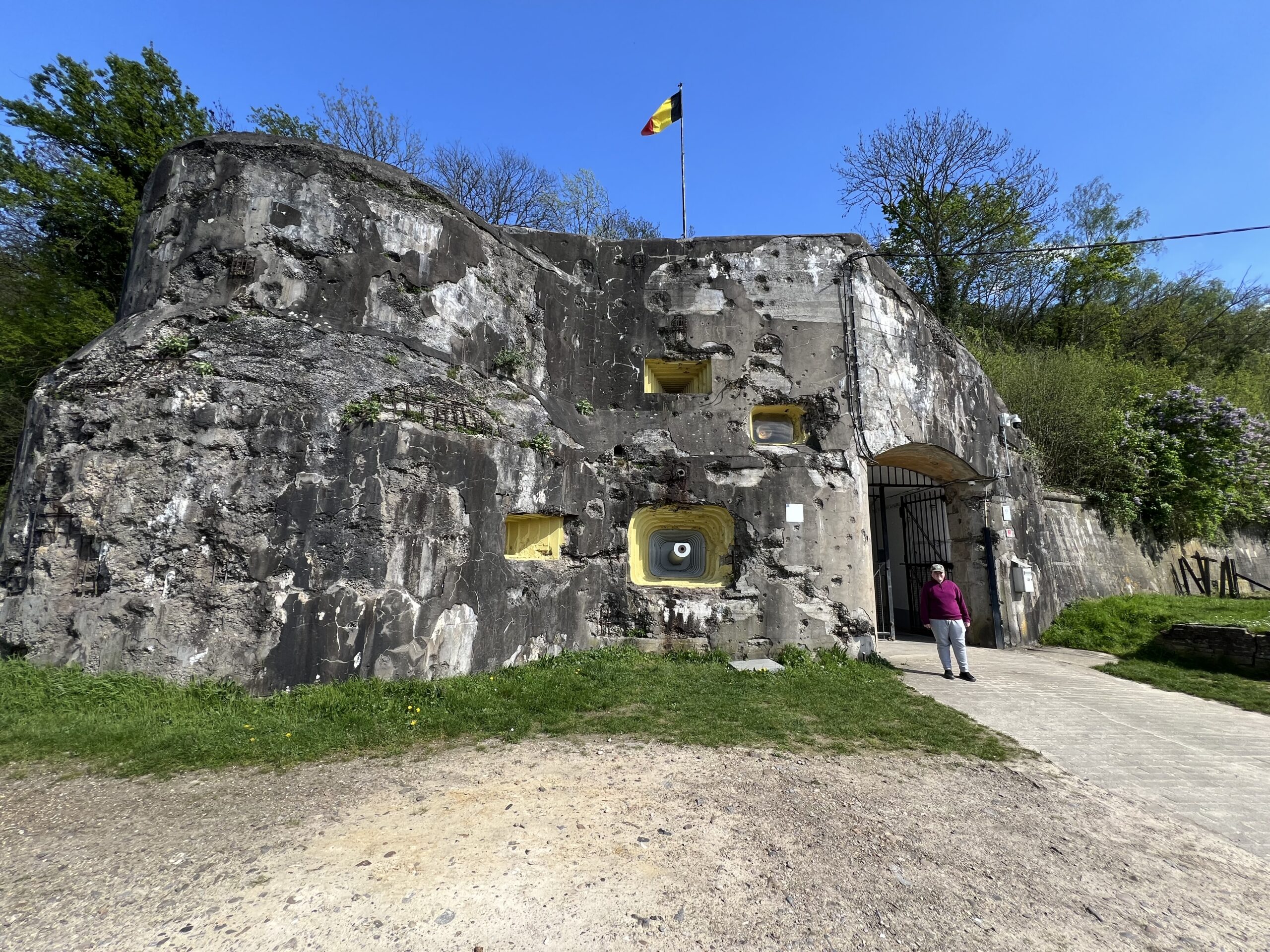While staying at Waterloo this month I took the opportunity to visit Fort Eben-Emael located near the Belgium – Netherlands border protecting the Bridges of the Albert Canal. I have always wanted to visit this site, which created a new force of airborne assault copied by all major nations.

It was constructed between 1931 and 1935 and thought to be impregnable. Built with two and half miles of tunnels underground and a mix of turrets and casemates. Its location meant that it could support the defense of the three main bridges over the Alber Canal. Built into a hill, it is extremely well hidden. In 1940 it was commanded by Major Jottrand and 1,200 troops were stationed at the fort, split into three sections. One section was permanently based at the fort, such as technicians, cooks, and maintenance staff. The other two groups of 500 each rotated one week on and one week off manning the fort and guns.
The Fort is remembered due to the first ever Glider Airlanding assault to be carried out. I think of Pegasus Bridge or Arnhem, but it was at Fort Eben-Emael, that this type of operation was first conducted. This was the first airborne Coup de Main action.

Part of a greater air assault, which launched its attack on the 10th May 1940. Elements of the German 7th Air Division and 22nd Airlanding Division were tasked with capturing three bridges across the Albert Canal and to capture Fort Ebel-Emael, which was able to fire upon any attack on the bridges. The group was split into four sections, one each for each bridge and one for the fort. They used new gliders and had to land very close to the bridges and on top of the fort. They would then be supported by paratroopers dropped after the initial glider attack.

Gliders were chosen as the Belgians used noise detection systems rather than radar, so being as quiet as possible was very important.
The Fallschirmjager loaded into forty-two gliders totaling 493 airborne troops. This was split into four sections. The Airborne troops had been training for these actions for some time and knew exactly what they needed to do. If they did not take out these guns, they could be used to take out the bridges that their fellow airborne troops were trying to capture.

The airborne troop captured two of the bridges quickly and one was blown by the Belgian. The section which landed their gliders on top of the fort were armed with new top secret shaped charges. It has a concave metal hemisphere that conceals a high explosive, and when that is detonated the metal liner is compressed and squeezed forward. These were placed on turrets and guns; they concentrated the explosive which melted through the turrets and guns. They systematically took out each of the sixteen-gun emplacements from the outside.

Eighty-Seven airborne troops landed on the fort in nine gliders. The shock and surprise of the attack had a huge effect on the morale of the defending troops who issued a cease-fire and by noon the next day had surrendered. The Belgian has lost 100 men and 1,000 were captured. The Germans had only 26 casualties with 6 killed.



The Fort has been turned into a great museum and by visiting it you start to understand the scale of the place. It was the so-called greatest fort in Europe. The speed and ease that the Germans were able to capture it had a lasting effect on not only the Belgian, but also the Allies such as Britain and France. They withdrew troops from the Belgian interior, and this cleared the way for a German attack through the Ardennes, surrounding the Allied troops in Belgium and pushing them back to Dunkirk.


Good capture of Fort Eben-Emael. We were there in 2019. The restored areas are well done. I found the mannequins sort of disturbing though, more so than other places.